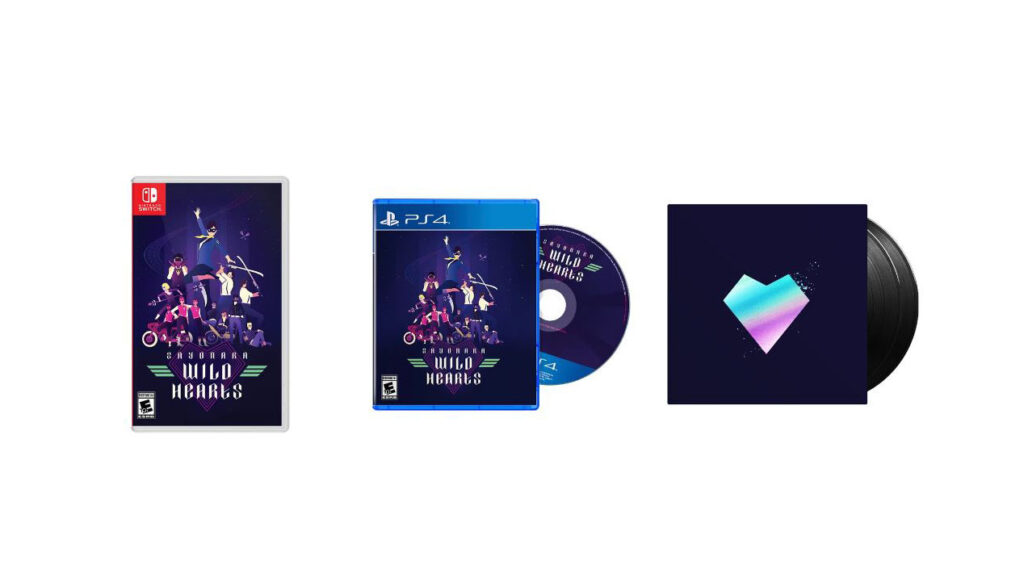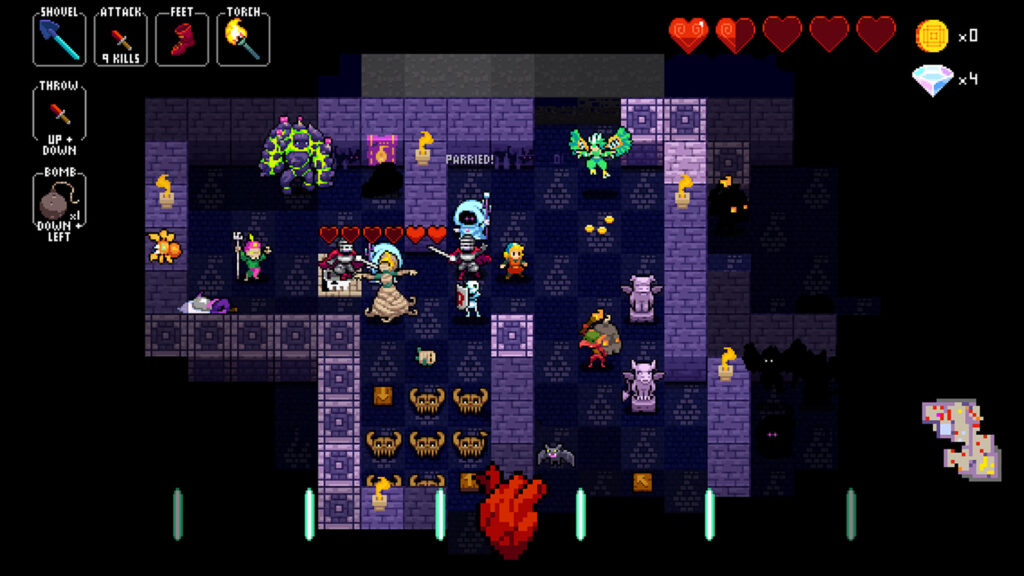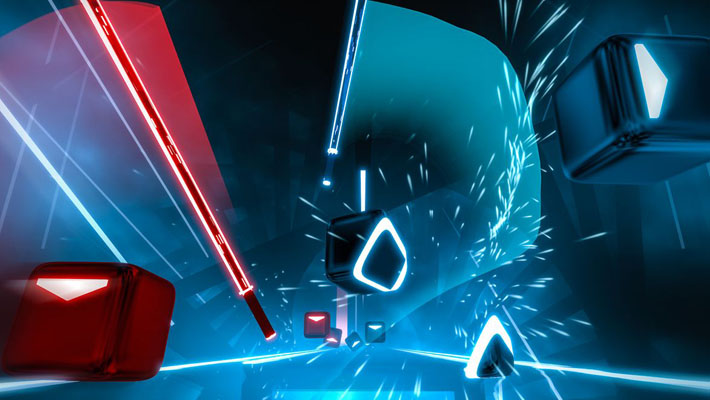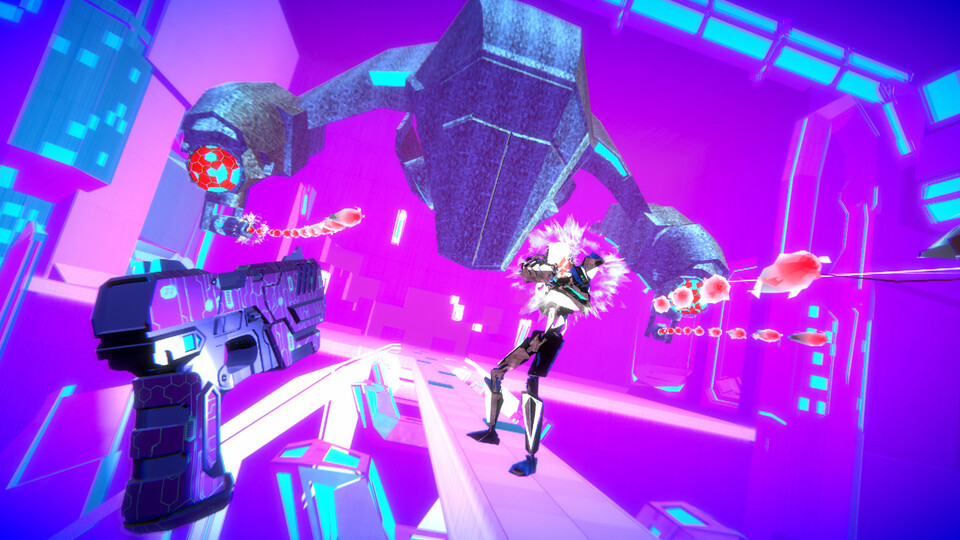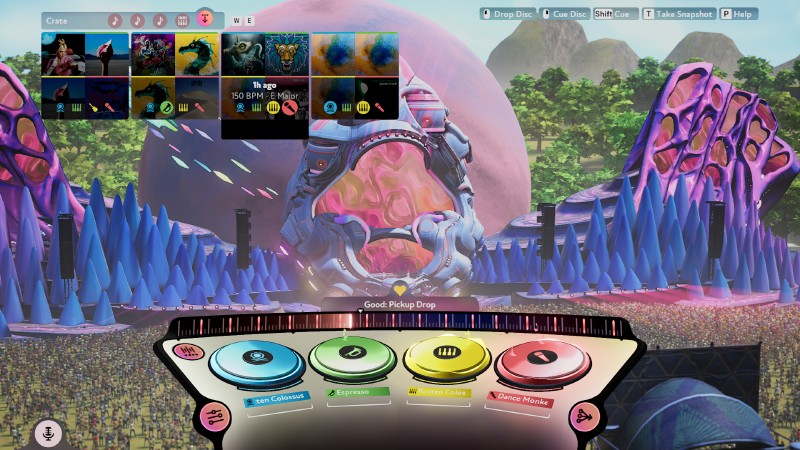
Music surrounds us wherever we go. Whether it be blaring through our headphones on the way to work, pumping out of speakers at the mall or quietly accompanying our adventures in an RPG, music is totally ubiquitous.
Thus, it’s no wonder that game designers continue to draw on music as a huge inspiration for gaming—spawning the very genre of the music game. But don’t let it’s name fool you, this genre spans everything from Guitar Hero to Sayonara Wild Hearts to Crypt of the NecroDancer—from playing along, to playing the music to playing to the music! Let’s solo this genre for a moment, to take a closer look at what exactly makes a great music game.
1. Good Music – Thumper
This is a no brainer, if someone can’t enjoy the music of a music game then, well, they’re not going to be sticking around for long. But don’t let this give you the wrong impression. “Good” music doesn’t need to mean critically acclaimed songs known by the player (a la Guitar Hero). Instead, here “good music” refers to music which makes the game feel great.
Thumper is an incredible example of this. It’s eccentric, industrial rhythms almost certainly won’t make it onto your next Spotify playlist—but that doesn’t matter! When you’re in the midst of an intense level of Thumper, the music is not only “good”, but also perfect at drawing you in, keeping you hooked and delivering the adrenaline rush which is the game.
Thus, don’t feel that every great music game has to come with huge licensing fees—they simply don’t.
2. Visual Flair – Sayonara Wild Hearts
While music games might sound like their all about the music, they most certainly are not. Meaning visuals are just as important as with any other experience.
Fortunately for music game developers, given music’s fluid and abstract format the genre of music games often allows for incredibly liberal and interpretive graphical styles.
Sayonara Wild Hearts is an example of a team taking the visuals of a music game to the next level—with the game essentially functioning as a visual (and gameplay) album for the music presented. Seriously, go google it. It’s insane. Take that and compare it to the flaccid aesthetics of Guitar Hero and Rock Band of old… I think I’ll stick with the visual flair, thank you very much.
3. Musical Gameplay – Crypt of the NecroDancer
Sound and visuals will only get you so far without engaging gameplay—after all, this is the music game we’re talking about.
The key feature of the genre of music games is that they bring music into the player’s hands by incorporating it with fresh game design.
While this can be taken quite literally with instrument games like Guitar Hero, more memorable music games place their music into a whole new context. Take, for example Crypt of the NecroDancer which re-contextualizes a Zelda-like dungeon crawler into a disco dungeon dash, forcing you to move only on the beat of the level’s song. Such gameplay is not only unique, but it helps players to engage with the music on a deep level—making it a prime example of how the music game doesn’t need to be constrained by the songs it contains.
4. Memorable Audio-Visual-Ludic Fusions – Beat Saber
While we’ve discussed the music, the visuals and the gameplay thus far, we have to remember the music game is a form where both come together meaning their final power is in their fusion. Allowing you to see, hear and play with the music all at the same time.
Beat Saber is perhaps the modern example of how to make a music game merge the three facets of visuals, music and gameplay.
Simply put, Beat Saber drops you into an abstract VR world where blocks fly at you from the void to a song’s rhythm—requiring you to slice them in time to the music. All the while being accompanied by glorious light shows and pattern work.
Beat Saber is so memorable because it brings together these three aspects into one tight package which seems like it’s all about the music (but is secretly about the entire audio-visual-ludic experience).
5. Strong Game Feel – Pistol Whip
Game feel is hard to describe. It’s that extra piece of seasoning sprinkled over a game to make its controls feel snappier, it’s interactions punchier and, ultimately, more engaging.
Pistol Whip draws from Beat Saber to do just this, offering up a VR experience which simply oozes game feel.
In short, Pistol Whip is Beat Saber where you shoot—or pistol whip—enemies to the beat, instead of slicing boxes. But with that simple change comes the opportunity for dialling up the game feel, and that’s exactly what the developers did. Everything from the action of shooting in time to the pulsating visuals exudes game feel which players can glut themselves on to get absolutely hooked.
As we’ve explored, the music game is more than just music, visuals or gameplay. It’s a complex amalgam of the trio into unique experiences that can’t be had in any other medium—or in the real world, for that matter!
And if there’s anything to take away from this; it’s that the most memorable music games will distance themselves from the real-world acts of playing music.

